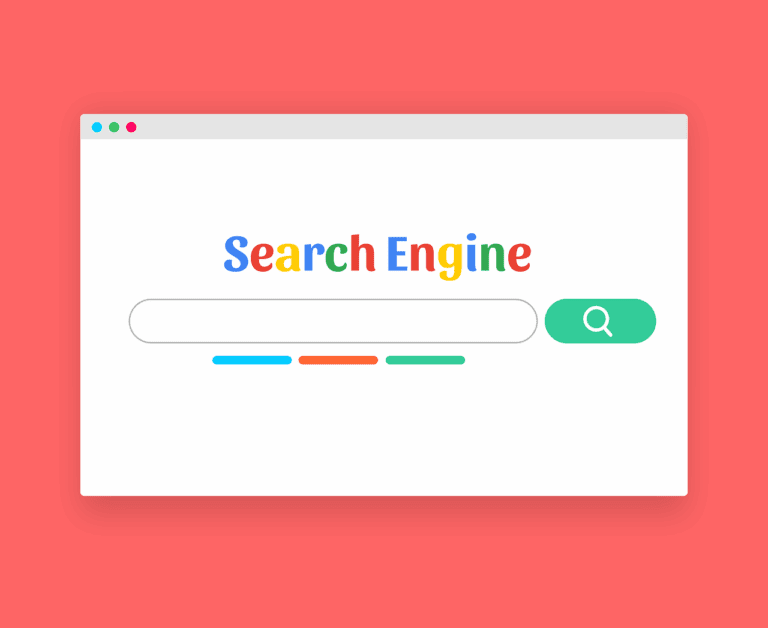The biggest mistake eCommerce companies make, is to think that product descriptions count for SEO more than the structure of the product data itself. Many companies even make a simple PDF upload of their old catalogues. In doing so they miss out on all of the juice they can squeeze out of a well-structured and organised eCommerce catalogue.
An eCommerce catalogue created with SEO in mind from the very start saves a lot of time for all of the teams involved. It also provides better results from the get-go. Integrating this kind of SEO work with existing inbound marketing activity will help to supercharge your digital marketing efforts.
How To Structure Your eCommerce Catalogue
All businesses want their products to appear in the top results on Google, bring in organic traffic and offer the best-looking products to potential customers, that’s obvious. The popular thinking in positioning a company is that the only battleground is on the keywords.
And yes, keywords make for good SEO ammo, but there are other weapons to use, namely your catalogue structure.
The best architecture for product information results in:
- An authoritative content scheme for search engines
- Coherent internal linking
- The right product data to meet customers’ expectations
- Lower maintenance costs
| Factor | Tips |
|---|---|
| Unique Titles | Remember to include the most important words at the beginning of the titles, and that have fewer than 70 characters. |
| Redirects For Discontinued Products | Try using 301 redirects that lead the customer to a similar product or the same range. |
| Strategic Keyword Placement | The golden rule for an eCommerce catalogue SEO is never to copy the descriptions of your manufacturer or the competition. Your texts have to be unique and ultimately, yours. |
| Schema Markup & Rich Snippets | These elements indicate what the page is about and that it contains a product sheet (not a post, article or report), a review or a price list. |
| Buyer Reviews | Reviews add descriptions with a more natural language and keywords integrated in an organic way to each product page. |
The Elements of Your eCommerce Catalogue That Impact SEO
The optimization of an online store or digital catalogue starts with structure. The way your content is organised into categories, subcategories, families and tags determine how easy your products will be to find in an online search engine such as Google or Bing.
Depending on the relevance of your product or sector, the variety of keywords and their importance in the search, your catalogue should be organised according to the right criteria. This analysis is vital for eCommerce in the first phase of creating a catalogue.
Once you know what keywords and related phrases work best for your products, you can include them in your catalogue and adapt your content to what your customers are searching for.
Here’s an example.
If you sell trainers, you could structure the catalogue according to the criteria of age or gender (women, men or children), or according to sports criteria (for football, basketball, fitness, running).
Analyzing the most popular online searches for trainers, you’ll find that it is much more common for the user to consult sportswear by brand, colour, or gender. This would indicate that the ideal category and attribute structure for your product catalogue should follow those criteria, rather than the type of sport.

This analysis will make it easier to optimize your eCommerce catalogue for SEO and adapt it to your product type. The most popular search terms should match the most authoritative content on your website. These is normally the main categories in the menu. Search engines will identify which pages are the most relevant on your website and highlight them so that they match the best interest of your shoppers.
In addition, this analysis also gives you some clues about the filters that will be most useful for web browsing.
Using Product Information Management (PIM) software will help you analyse the quality of your product information. A PIM platform will save you a lot of time in reviewing information and also ensure you’re sending the right data to your sales channels.
Once you have created an SEO-friendly catalogue structure for your type of product, you can start optimizing your content.
Unique Titles
There may be images on each product sheet that differentiate your products. However, it’s not advisable to repeat product titles in an online catalogue.
Use unique names for each product, and try not to duplicate keywords to prevent Google from penalizing you. It is hard work that involves a lot of creativity. Know your customers well: what would they write into the search bar?
Remember to include the most important words at the beginning of the titles, and that have fewer than 70 characters.
Redirects for Discontinued Products
What’s one of the biggest headaches for eCommerce marketers? Products disappear over time. This is either because they were not popular and you have withdrawn them or because you can not continue selling them.
There’s a lot of advice about creating the “perfect 404 page”, but the truth is a 404 page doesn’t provide valuable content to your buyers. Try using 301 redirects that lead the customer to a similar product or the same range.

Variety of Keywords in Strategic Places
Apart from choosing good keywords, the golden rule for an eCommerce catalogue SEO and content is never to copy the descriptions of your manufacturer or the competition. Your texts have to be unique and ultimately, yours. Repetition is the number one enemy of Google (and shoppers, too).
To create your keyword map, get in touch with an SEO expert or use online SEO analysis tools such as Moz, SEMrush, or Majestic.
These are the best keyword locations in a product catalogue:
- Categories: Using keywords in categories helps the search and location of products on your website and their appearance in search results. In the categories it is best to use your main keywords.
- Products: Use more specific keywords to differentiate your products, such as model, brand, material, color … and use them in titles, H1 labels and descriptions.
- Images: Your image filenames can also influence when the search engines read and identify your content.
- Metadata: Meta descriptions and Alt text images are forgotten places that are very relevant for online product positioning.
- URLs: they are the identity card of your products for search engines, so you need a very clear and organized structure that identifies each page with meaning.
Schema Markups & Rich Snippets
Schema is a structured content markup that helps Google understand how a website (and therefore the internet) is put together. A website that uses Schema are also occasionally rewarded with a snippet:

Some businesses are obsessed with making their snippets appear featured on Google. However, they are not actually a fundamental piece of positioning.
But every little helps, and adding schema markup to your product pages allows them to be more easily identified in search engines. These elements indicate what the page is about and that it contains a product sheet (not a post, article or report), a review or a price list.
Buyer Reviews
This is an optimization step that is not directly related to your catalogue. But it is highly recommended to allow customer reviews or ratings on your website. Reviews add descriptions with a more natural language and keywords integrated in an organic way to each product page.
Final Thoughts
Finally, although catalogue structure is hugely important as an initial step for SEO, it’s also recommended that you analyze the content constantly.
The Enhanced Ecommerce feature of Google Analytics allows you to study the performance of your online store and digital catalogue, such as web speed, which products are more and less visited and sold, and by what searches your web traffic arrives. This data is very valuable to help you make changes and adjustments that can improve your sales. Using it you can adapt your product content to the real needs and searches of your customers.





